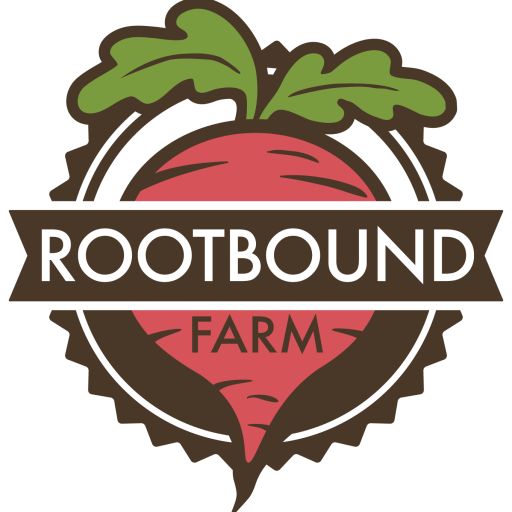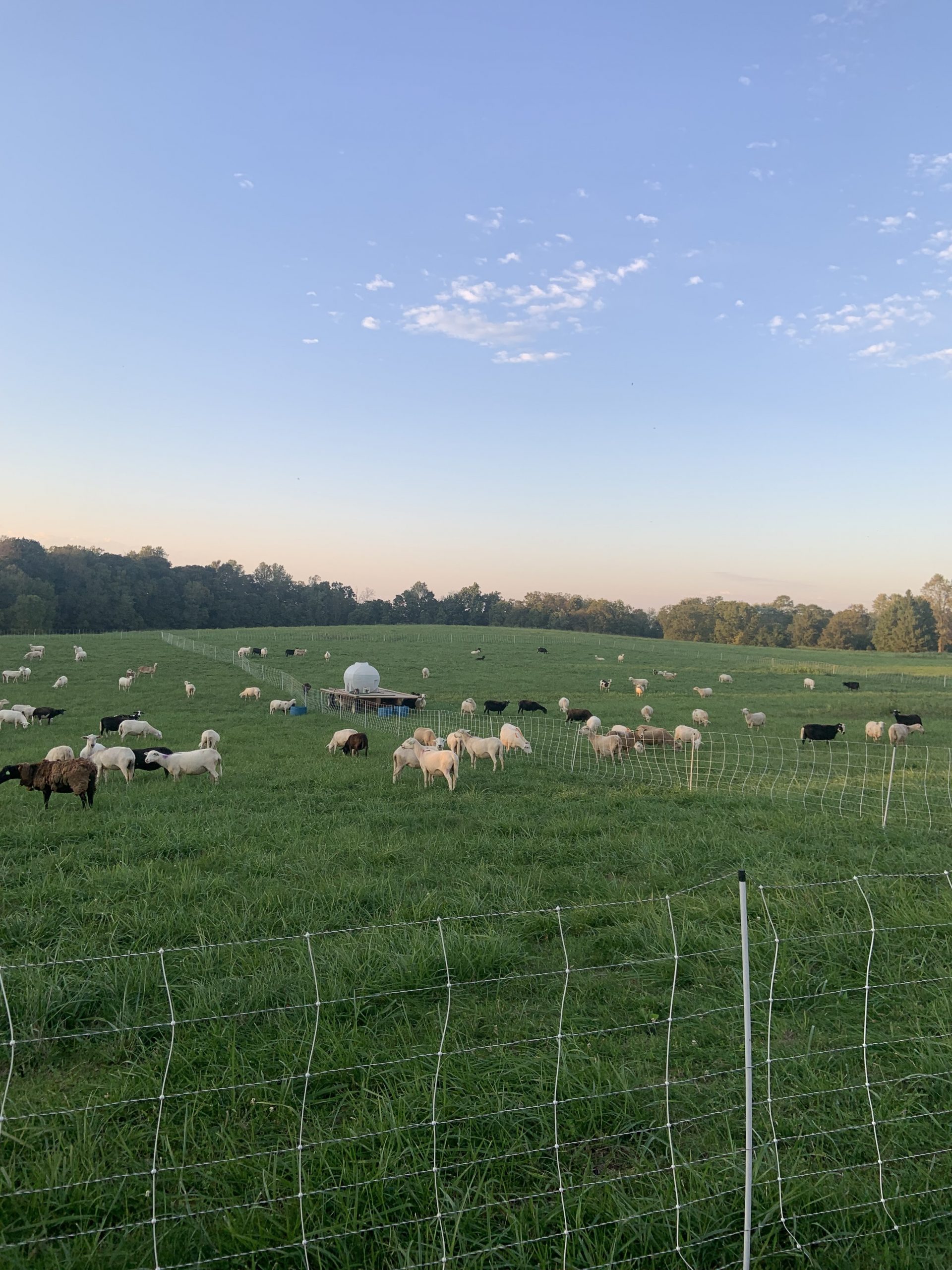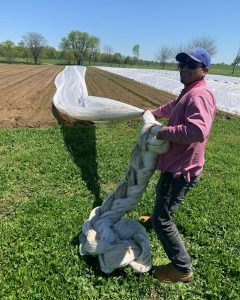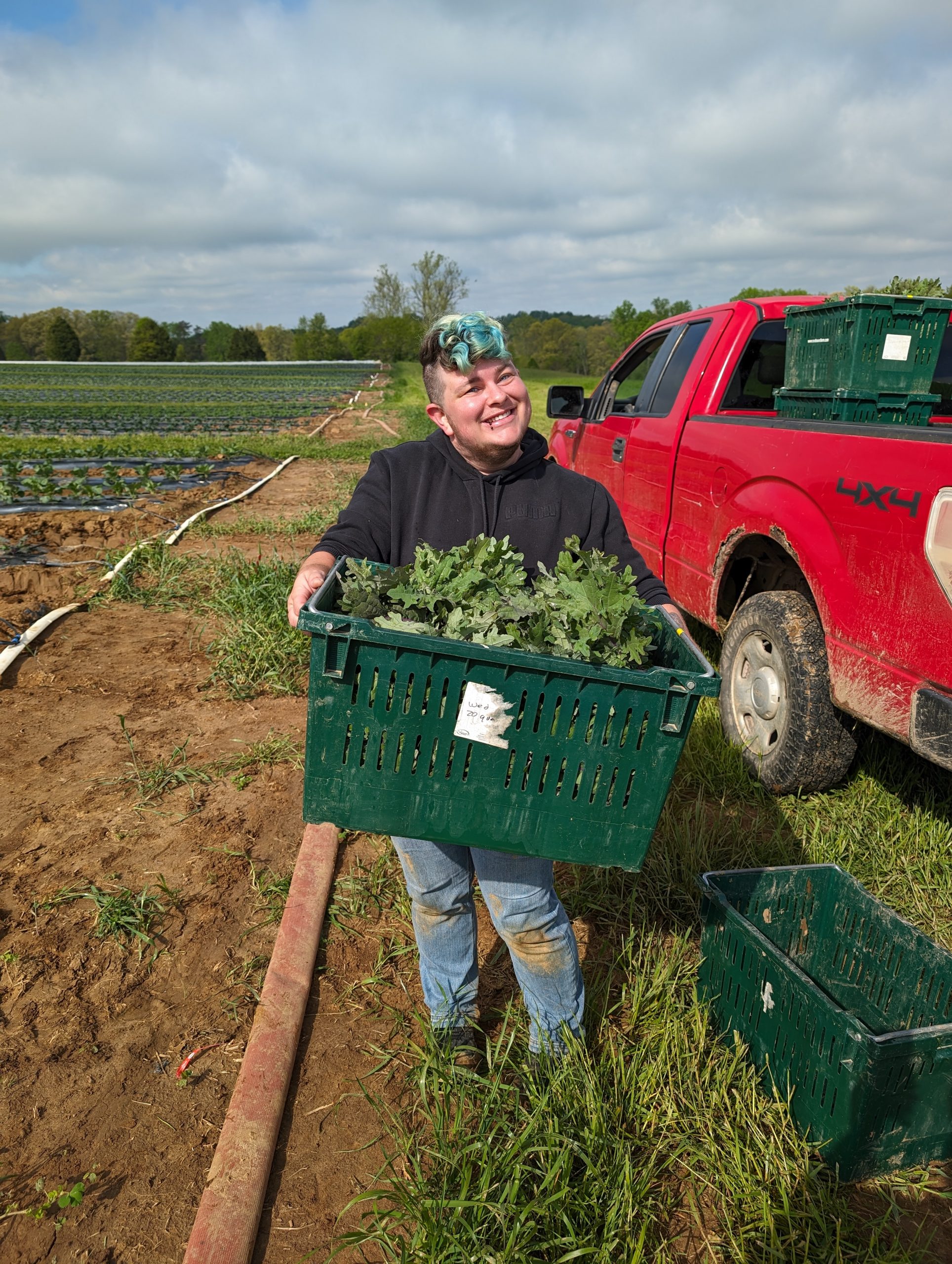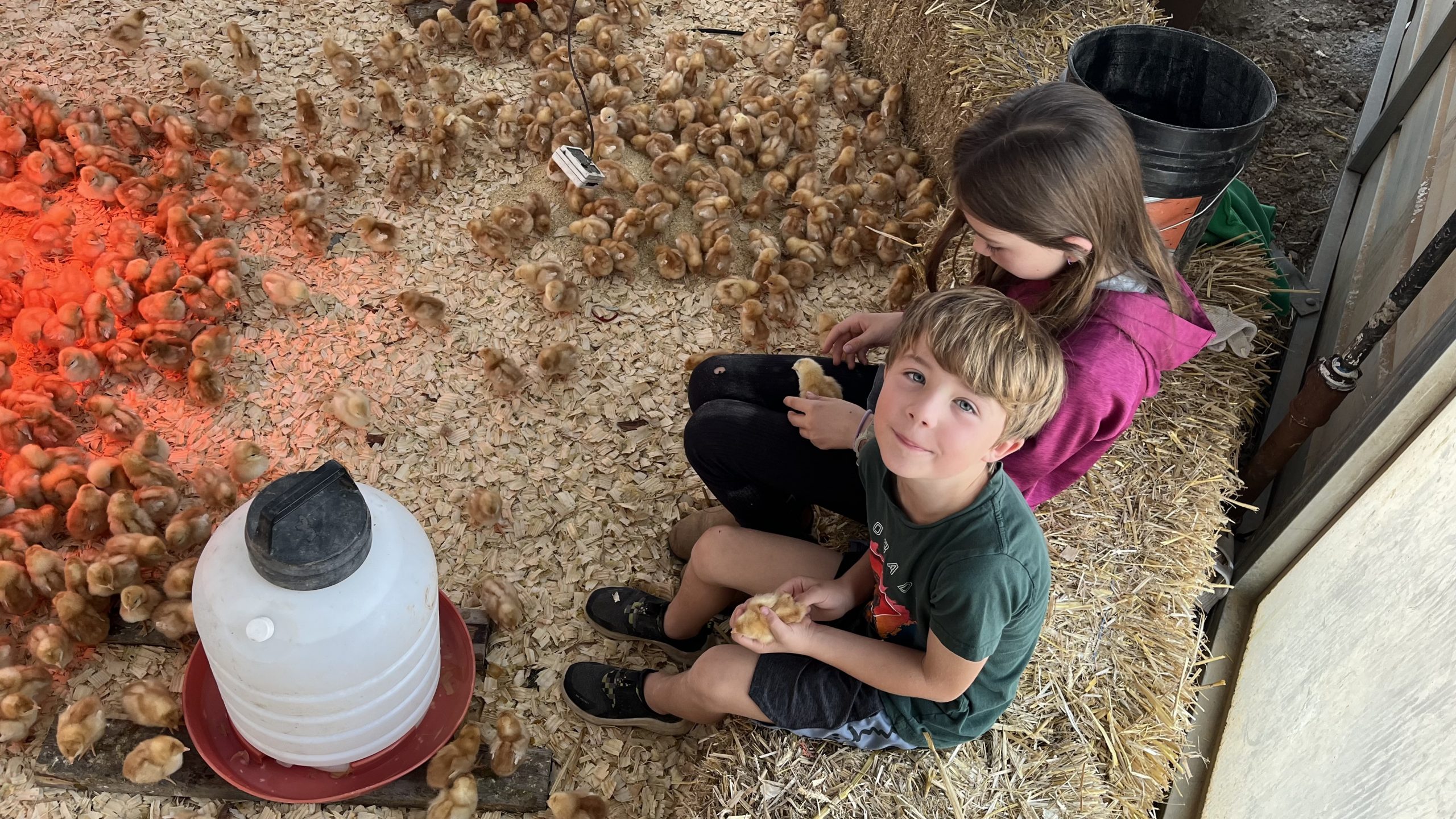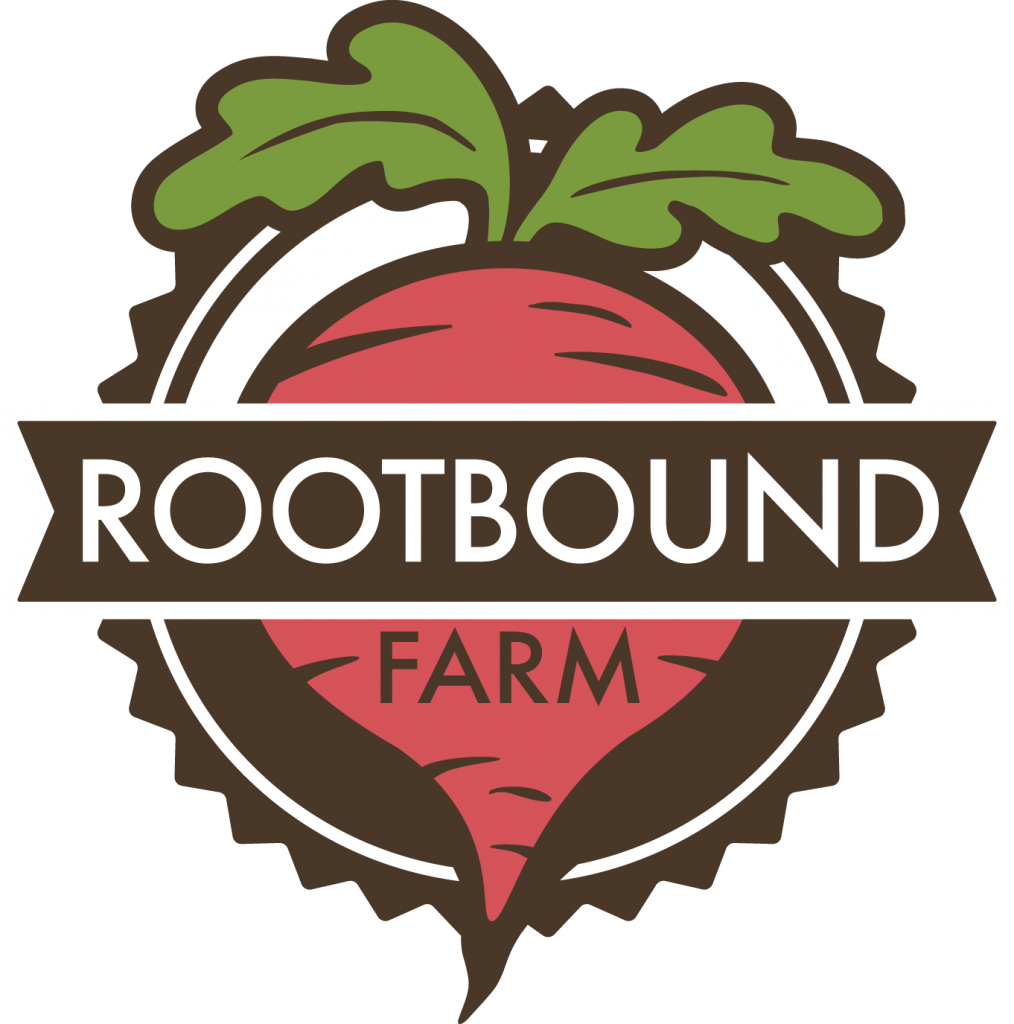As we head into fall, the animals on the farm are experiencing seasonal shifts as well. Earlier this week Bree, Ben, and Ramon worked 160 ewes (adult female sheep) and 250 lambs. “Working” sheep means we bring all 400 animals up near the barn and get our hands on every animal and take records about their health and growth. We had several goals including a welfare check for everyone, separating or “weaning” the early Spring lambs from the ewes, and dividing the moms into new breeding groups. The first check for the ewes is to check everyone’s udders to make sure she isn’t having any mastitis or other issues after nursing twins and sometimes triplets for the past 7 months. Then we separate the ewes into new breeding groups as we will begin breeding in the next month. We have 4 experienced mature rams and 1 new young ram and together these 5 rams will breed 160 ewes that will all give birth next Spring. We plan our breeding carefully so we will know exactly when to expect our new 2022 lambs. Sheep have a 5 month (150 days to be exact) gestation so if we begin breeding October 20th we can expect to start having lambs for on March 20th 2022. This year we weaned our lambs the latest we ever have at almost 7 months of age. Most of them were almost as big as their moms and have naturally stopped nursing therefore this was probably the smoothest weaning we have ever done – this group appeared confident and ready to go off on their own find their own little corner of fresh grass.
The laying hens are also experiencing their seasonal shift. Hens lay eggs according to daylight and as the days get shorter we’ve seen a dramatic decline in the number of eggs being laid. In the peak Spring we were collecting about 55 dozen eggs/day and now we are down to about 25 dozen eggs each day. Some of our laying hens are also going through a “molting” period where they are growing a new set of feathers. When they molt they also decline in the eggs they produce because they are using all their energy and calories to grow new feathers. We are making some changes by upping the protein in their diet and making the feeders more accessible in hopes of giving them a nutrition boost to start laying a few more eggs. But as with all things on the farm, we can only take ourselves and our human interventions so seriously. In industrialized egg production, hens are kept indoors under artificial lights to simulate an eternal summer. Here at the farm the real sun is calling the shots and at a point we have to accept the natural limits and rhythms and see them as a working part of the bigger plan.
This week meet Ramon! This is Ramon’s 4th season at Rootbound Farm. Ramon is the animal guy – taking on a huge responsibility of being the primary caregiver for 1,000 laying hens, up to 1500 broiler chickens at a time, 400 sheep, and 4 livestock guardian dogs. Ramon is from Nayarit, Mexico, and spends about 8 months of the year here working at Rootbound Farm and then heads back home to Mexico for the deep winter to be with his family. Ramon and his wife have 2 children; their daughter is 13 and their son is 6. Ramon’s family are also cattle farmers back home in Mexico and one of his goals is to save money to purchase and expand their family’s farm land. Ramon also works construction back home in Mexico during the winter months.
- Ramon, what is your favorite job to do on the farm? Everything, I like all of the different jobs because I love to work.
- No really, you must have a favorite thing to do, right? Ok, working with the animals is my favorite and specifically the sheep are my favorite animals to work with.
- What’s the most challenging job on the farm? Sometimes the harvest can be really challenging. I’m thinking of bunching red Russian kale when you get that bunch just perfect and then you go to tighten the band and the top just breaks off.
- What’s your favorite vegetable we grow on the farm? Watermelon!
|
RECIPE/MEAL PLAN IDEAS
|
